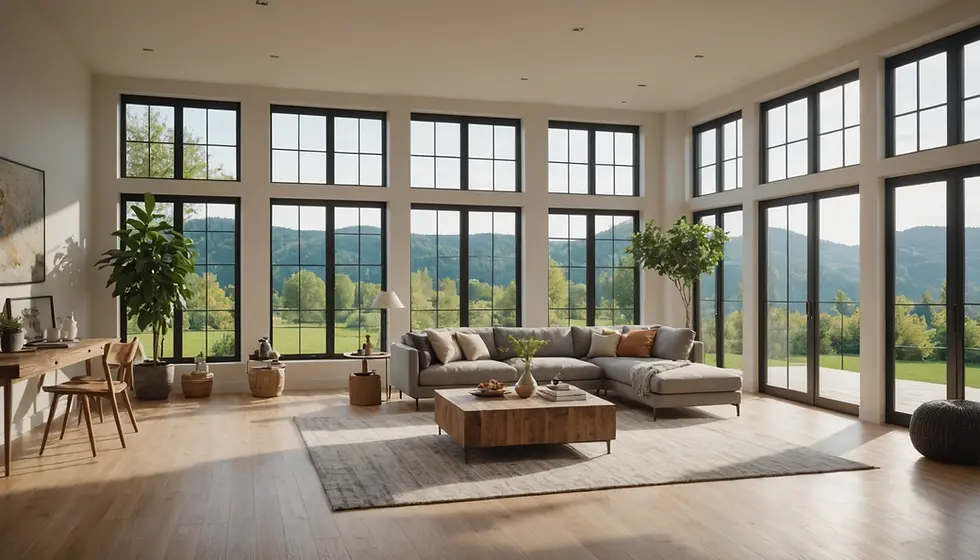2025 and Beyond: What's Next for Parametric Design?
- Immanuel Raj
- Dec 26, 2024
- 3 min read
As we approach 2025, the world of parametric design stands on the brink of transformative changes. With the rise of new technologies and a strong emphasis on sustainability, architects and designers are pioneering innovative applications of parametric design principles across diverse sectors. In this discussion, we will explore the trends driving parametric design, showcasing the synergy between technology and sustainability, and spotlighting its revolutionary applications.
Emerging Technologies Shaping Parametric Design
The evolution of parametric design is heavily driven by cutting-edge technologies. One of the standout advancements is Artificial Intelligence (AI), which is advancing at an unprecedented pace. AI-powered tools can analyze massive datasets and generate innovative design solutions that once seemed impossible. For example, a study from McKinsey found that AI can improve design efficiency by around 30%.
Additionally, generative design software has become widely available, with tools like Rhino, Grasshopper, and Autodesk Fusion 360 enabling designers to input specific parameters. This empowers the software to produce multiple creative iterations in a matter of seconds. Designers using generative design have reported a 50% reduction in the time spent on initial concepts, allowing more time for refinement and creativity.
The arrival of Real-Time Rendering technologies further enhances the design process by providing immediate visual feedback. Designers can experiment with various elements and tweak their designs based on instant insights, which fosters an atmosphere of innovation.
Sustainable Practices in Parametric Architecture
Sustainability has shifted from a bonus to a requirement in architecture and design. Parametric design excels in optimizing building performance and resource use, contributing significantly to sustainable practices. By employing parametric modeling, designers can evaluate elements such as energy efficiency and material impact during the concept phase.
For instance, algorithms that analyze building shapes can predict their interaction with natural light. This capability allows architects to create designs that harness daylight effectively, leading to a potential 30% reduction in energy consumption for lighting. Additionally, parametric design can aid in crafting facades that decrease heat gain, improving indoor comfort while significantly lowering energy costs.
Parametric design also encourages eco-friendly materials. By experimenting with locally sourced materials, designers can minimize the carbon footprint associated with transporting building supplies over long distances. This not only supports local economies but promotes a deeper connection between the designed space and its environment.
Innovative Applications of Parametric Design in Different Industries
Parametric design's influence extends well beyond architecture, finding creative applications in diverse fields.
Fashion Design
In the fashion industry, designers utilize parametric principles to create adaptive textures and shapes. Tools like Clo3D help fashion designers efficiently customize garments, ensuring a perfect fit while minimizing waste. This method can reduce fabric waste by as much as 20% compared to traditional production techniques.
Interior Design
Within interior design, parametric methods facilitate the generation of intricate wall patterns and uniquely designed furniture that manual methods cannot easily achieve. This capability enables designers to provide tailor-made solutions that reflect personal tastes and meet specific needs, enhancing user satisfaction and functionality.
Urban Planning
Urban planners deploy parametric design tools to simulate variables such as traffic patterns and population density. By using data-driven approaches, they can make informed decisions that shape vibrant, functional public spaces. Cities that adopt such strategies can experience improved community engagement, with studies indicating that well-designed communal spaces can enhance residents’ well-being by up to 25%.
The Collaborative Nature of Parametric Design
The collaborative nature of parametric design fosters teamwork among various stakeholders, including engineers, builders, and clients. Enhanced communication and visualization tools allow for seamless cooperation, resulting in well-rounded designs that address diverse perspectives.
Moreover, the emergence of open-source parametric tools has democratized the design process, inviting contributions from a broader range of creative minds. This collaborative approach can lead to exciting designs that might not emerge from traditional practices.
Challenges Ahead
Despite the exciting advancements, several challenges remain in the widespread adoption of parametric design. The costs associated with acquiring software and training can be high, posing a barrier for smaller firms. Additionally, designers unfamiliar with algorithm-driven tools may face a steep learning curve.
Another concern is the risk of over-reliance on technology, which could stifle human creativity. Finding the right balance between advanced tools and human insight will be essential for ensuring successful outcomes in parametric design.
Looking Ahead
As we look to the future of parametric design, it's clear that 2025 promises significant progress. Emerging technologies are reshaping design methodologies, while a robust commitment to sustainability is transforming architecture and other fields. From fashion to urban planning, the innovative use of parametric techniques opens up a realm of new possibilities.
While challenges must be acknowledged, the potential for collaborative innovation through parametric design sets the stage for a creative and sustainable future. As global demands for responsible and aesthetic design grow, those who harness the power of parametric design principles will lead the charge into a more sustainable and beautifully crafted future.




Comments